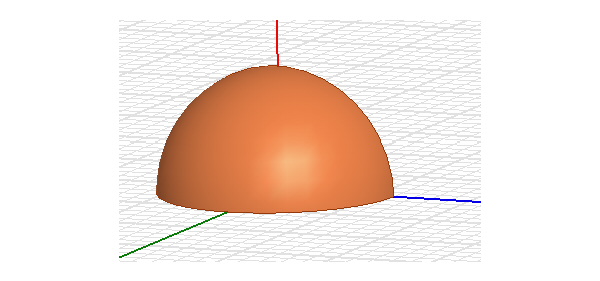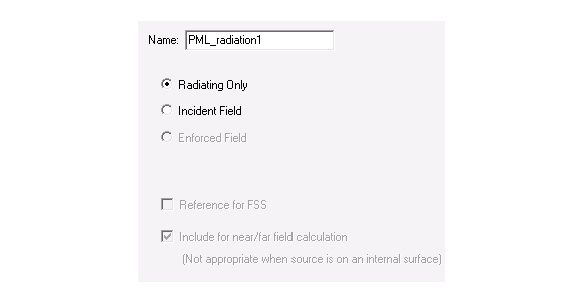Assign Excitation > Incident Waves
Incident Plane Wave
A plane wave propagates in one direction and the fields are perpendicular to the direction of propagation. A project which simulates the RCS of a dielectric sphere is shown below. We take advantage of the symmetery and model just 1/8th of the structure.

First we use the E and H symmetry boundary conditions where we cut the sphere and then, apply PML boundaries on the remaining surfaces.
Since this is a scattering problem and the scattered field is weak, use the option Radiation Only.
For more information about these options, see Radiation Boundary Panel.

To assign a plane wave in HFSS, right click Excitations on the project tree and select Assign>Incident Wave>Plane Wave.

The Incident Wave Source : General Data dialog box appears as shown below. You can select either Cartesian or Spherical for the Vector Input Format.
First we will describe the effect of choosing Cartesian followed by Spherical.

Cartesian Vector Setup
Enter the Cartesian Co-ordinates on the Incident Wave Source dialog box to set the excitation location and click the Cartesian Vector Setup tab.
A plane wave is described by the following equation.

where k
= wave number of the global background material for regular/propagating plane waves.
= (b + ja) for evanescent waves since they do not depend upon the background global material.
In the Cartesian Vector Setup panel you can specify the E0 vector and the direction of the unit vector. It is your responsibility to ensure the direction of propagation of the plane wave is perpendicular to that of E0. Based on the panel settings notice the E0 and k vectors below.

-

国内最全面的HFSS培训课程,包含7套视频教程和2本教材,资深专家讲解,视频操作演示,结合最新工程案例,让HFSS学习不再难...【详细介绍】





